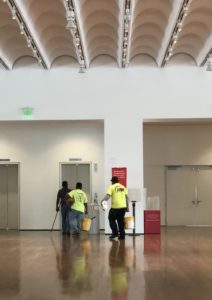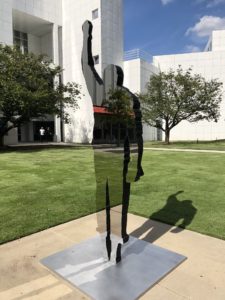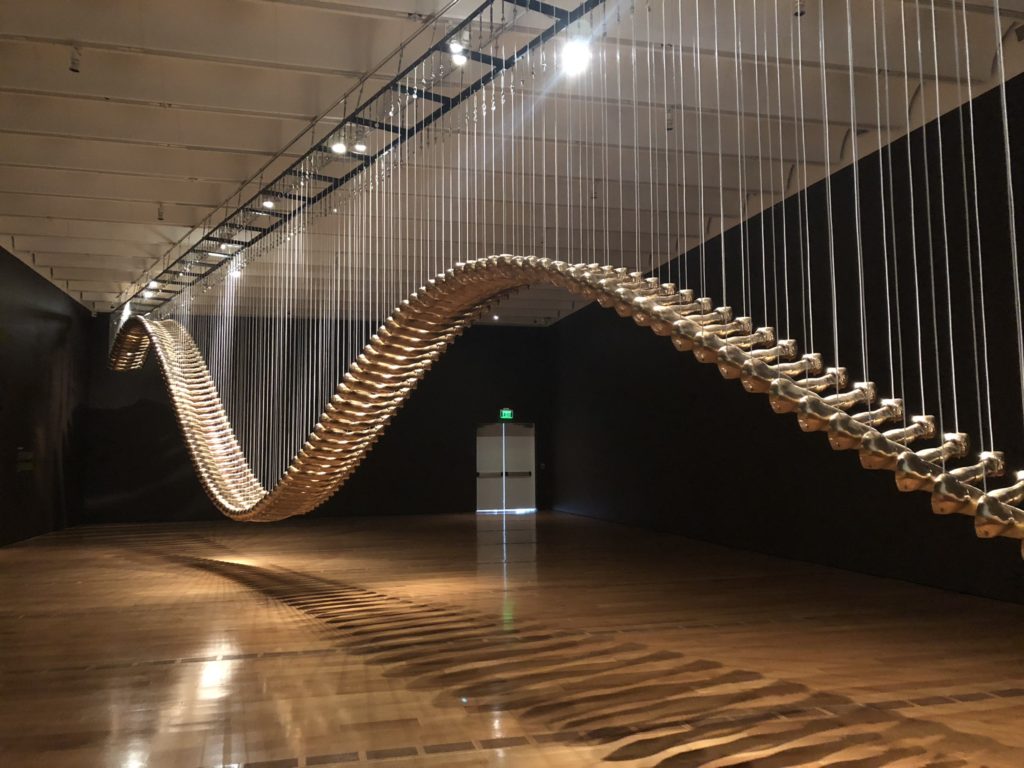2018 Reinstallation: Refreshed. Reimagined. Revealed. from High Museum of Art Atlanta on Vimeo.

When I visited the High Museum in Atlanta in the beginning of October, I caught it during an awkward in-between time. The museum was in the final stage of mounting a total gallery reinstallation and almost the entire space was closed. There was a single exhibit on display in an outbuilding, With Drawn Arms: Glenn Kaino and Tommie Smith, but the museum was otherwise closed. This might seem like an odd choice for an observation site. I’d never been to the High before, and I wouldn’t be able to visit it again once the galleries had reopened to the public.
I wouldn’t be able to make a before and after comparison, but I wanted to visit the High because the reasons and circumstances surrounding a complete gallery reinstallation tap into questions surrounding collections and archives and how the maintenance of them and the spaces that house them all end users to interface with them. In the case of museums like the High, that means its visitors, both from around the world and from the local Atlanta community.
As part of an FAQ (which has been archived since the museum’s unveiling) on the High’s website, the museum stated:
“Reinstallation is a planned part of the Museum’s long-term strategy. It’s an opportunity for us to rethink the way we present the artwork in our collection. Since 2005, we’ve added nearly 7,000 new objects to the permanent collection. Now feels like the right time to showcase these works, address wayfinding, spruce up the galleries, and make the collection presentations more cohesive and engaging for visitors.”
These ideas called to mind the the themes Joan Schwartz and Terry Cook addressed in “Archive, Record, and Power: The Making of Modern Memory”. The archive, or collection, and its keepers must be responsive and adaptive to context and change. Keepers should also acknowledge their responsibility in creating an archive that is representative and the archive’s role in the “exercise of power—power over information and power of information institutions. Also interwoven throughout is the crisis of representation—the power of records and archives as representations and the representation of power in records and archives” (Schwartz and Cook 9).
As of the 2010 census, Atlanta’s population was 54 percent black. The city is also the birthplace of Martin Luther King Jr. and the home of the Center for Civil and Human Rights. During my visit I was able to speak with Margaret Wilkerson, a Museum Educator and Docent Manager, who stated that part of the plan was to create more space for the High’s collection of civil rights era photography and to bring together the museum’s collections of African art, which had been previously scattered in different galleries. A review of the reinstallation in ArtsATL by Catherine Fox noted “[t]he High has made a concerted and noticeable effort to” include more art from women and people of color. A preview of the reinstallation in the Atlanta Journal-Constitution noticed that in the new layout “African art might share space with self-taught artists from the American South, and self-taught artists will be placed up against contemporary artists to show the energy exchanged between the two”–another aspect of the reinstallation that Wilkerson mentioned in our conversation.
This integration of different pieces from the collection works to create “stories linking works throughout the museum” (Fox). Wilkerson admitted that a weakness of the High in the past was it’s tendency to move from blockbuster exhibition to blockbuster exhibition, rather than focusing and drawing on the strength of its own collection. Creating narratives from work pulled from across time and location would hopefully draw in visitors who would be interested in returning to the High even when something major like it’s current Yayoi Kusama exhibition isn’t in town.

Ironically, the only work I was able to see was a temporary exhibit. But the themes of With Drawn Arms demonstrate the High’s desire to bring the past into the present and “[showcase] artworks relevant to communities from Atlanta and beyond.” A collaboration between Olympic gold medalist Tommie Smith and artist Glenn Kaino, With Drawn Arms brings together art and artifacts representing Smith’s act of protest during the the 1968 Olympic games. While the Star Spangled Banner played during his medal ceremony, Smith and teammate John Carlos bowed their heads and held up black gloved fists to represent Black Power and protest the mistreatment and denial of rights faced by black Americans. Colin Kaepernick’s Nike campaign had debuted just weeks before the exhibition opened and direct connections could be drawn between every element of Smith’s protest and Kaepernick’s.
The most striking work was a series of bronze casts Kaino created of Smith’s arm. The casts were hung from the ceiling and filled the room. Titled “Bridge,” Kaino describes the work on his website as “a golden path leading forward from the present but connected to the past, a spectacular reconciliation of a historic record, an individual memory, and a public symbol all renegotiated in an infrastructure of time to creates stories of the now.”

In visiting the High, I wasn’t able to actually observe much, but a museum (or archive) is not only it’s collection. It’s also the context and conversation around the collection. The reinstallation itself is designed to allow the museum to make adjustments and respond to its users. Whether their efforts create a successful bridge remains to be seen. I personally won’t be able to go see it for awhile. But I think the very fact that the museum recognized its need to pause and re-examine its role and the significance of its works is a good sign.
One thought on “Visiting a Closed Museum: The High Museum’s Reinstallation”